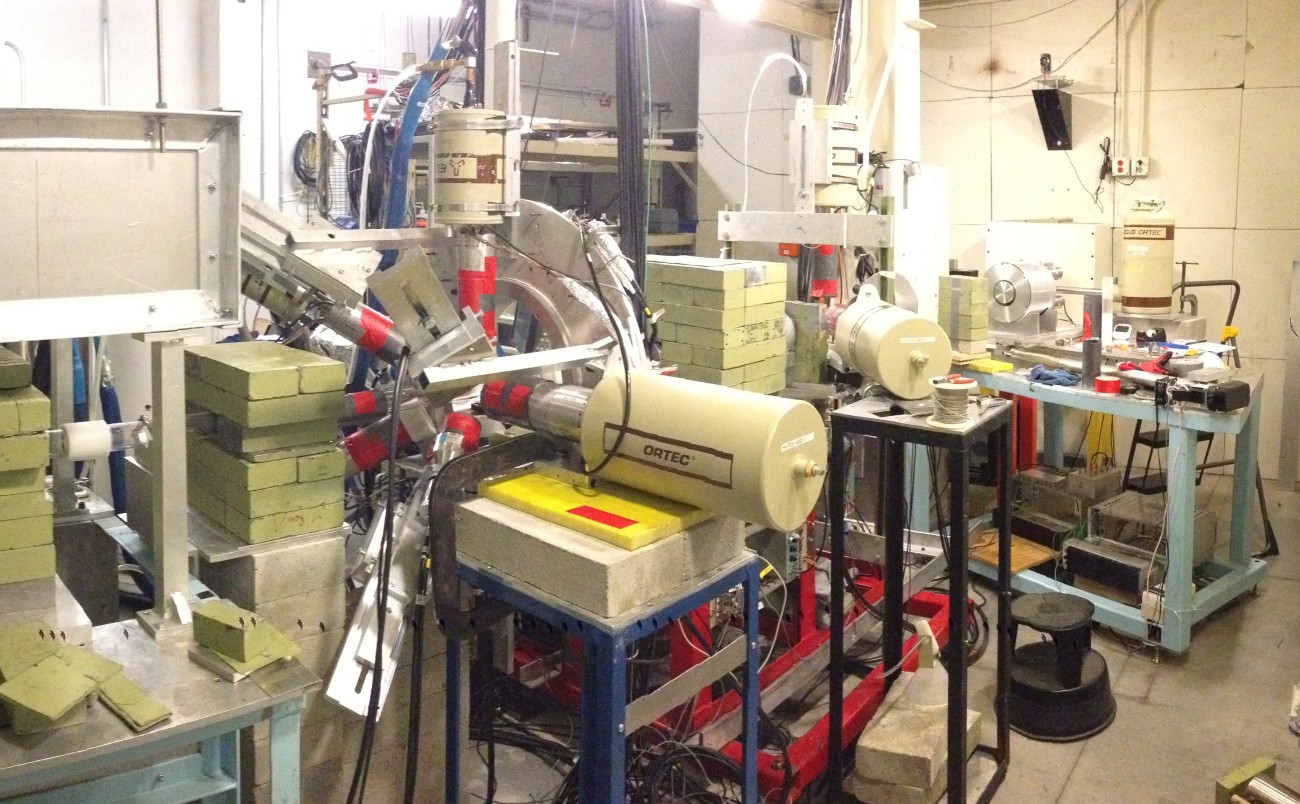Experiments at S-DALINAC
The S-DALINAC electron accelerator is predominantly used for fundamental research in nuclear structure physics, nuclear astrophysics, quantum physics and radiation science. Currently, five major experiments make use of the provided electron and photon beams (gamma-rays).
External Experiments
In order to understand the structure, shape and building-blocks of atomic nuclei and to address fundamental nuclear structure phenomena ranging from the microscopic composition of nuclear matter to the formation of elements or stars in the universe our research group applies a large variety of experimental methods and state-of-the-art nuclear detection technology at international large-scale research facilities.
Heavy-ion collisions at low, intermediate and relativistic ion velocities in combination with gamma spectroscopy (FAIR / GSI Darmstadt, INFN Legnaro, ANL Chicaco, HIE-ISOLDE – CERN) are used to study excitations of neutrons and protons in the valence shell of the nuclei to investigate the effective proton-neutron-interaction which is important for the evolution of the nuclear shape and nuclear shell structure. In most cases the nuclear states of interest are populated in a Coulomb reaction, i.e. the inductive excitation of nuclear states in the presence of the electromagnetic field of another ion. The experimental observables (i.e. quantities to be measured) are transition probabilities, lifetimes and electric quadrupole and magnetic dipole moments.
Collective excitations of the nucleus as a whole, e.g. the vibration of a „neutron-skin“ versus the remaining nucleus known as Pygmy-Dipole-Resonance (PDR) are investigated in (p,p')-proton-scattering experiments (RIKEN, Osaka). In these experiments using polarized and unpolarized proton beams we perform multipole decomposition analyses for the separation of transitions with electric and magnetic radiation character.
Besides the experiments with heavy accelerated particles we also use polarized monochromatic photon beams to measure spins and parities of excited nuclear states (TUNL, Duke University).


